Cultivating Nam bao ngu xam, scientifically known as Pleurotus sajor-caju, helps many locals in Long Binh Ward, District 9, Ho Chi Minh City have a stable income and get rich.
More than simply appealing to our taste buds, this variety of mushroom has numerous advantages that allow it to benefit society on a much larger scale.
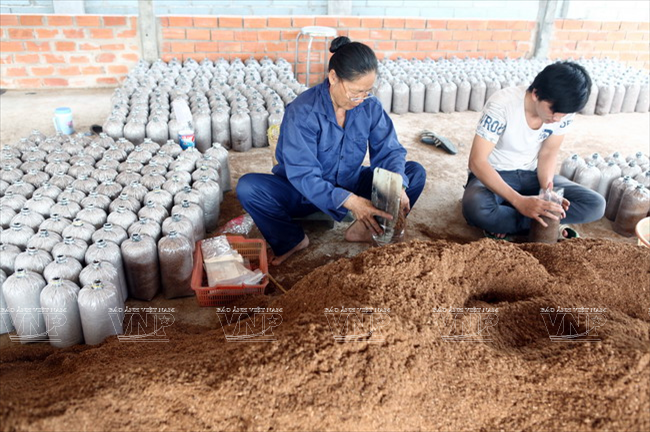
Pasteurized sawdust and humus are put into bags for growing mushrooms. Photo: Le Minh/VNP
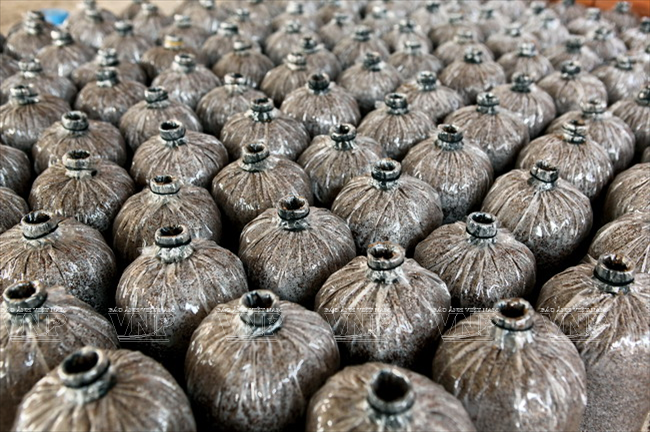
Prepared bags for cultivating mushrooms. Photo: Le Minh/VNP
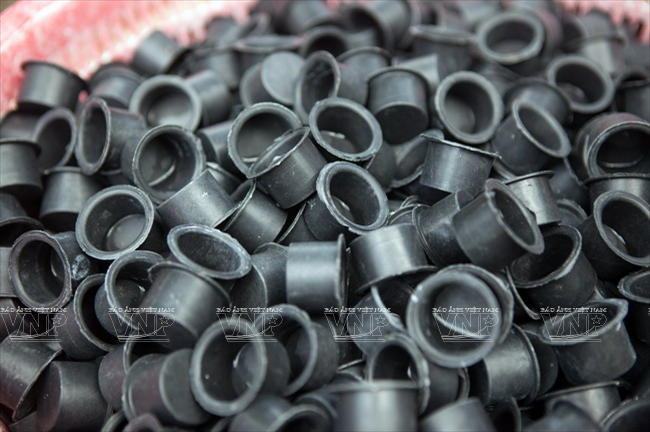
Plastic covers are used to controll the mushroom’s development. Photo: Le Minh/VNP
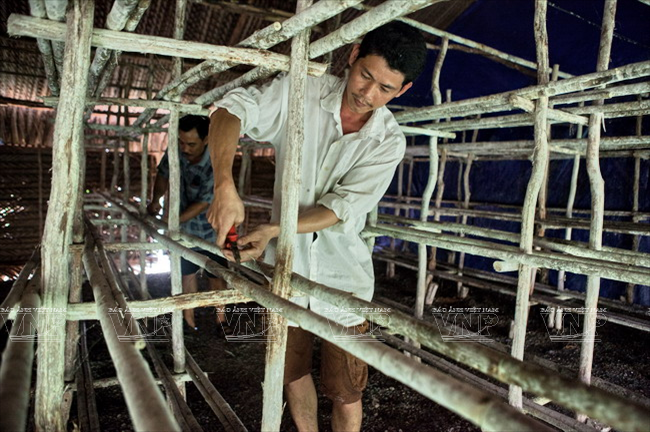
Building shelves in a mushroom cultivating house. Photo: Le Minh/VNP
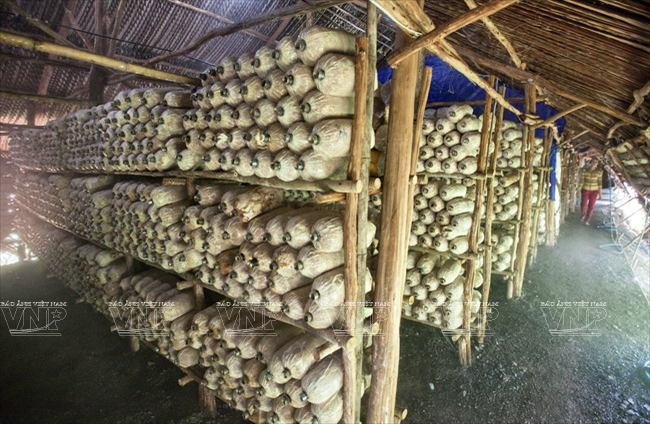
Part of a mushroom farm in Long Binh Commune, Ho Chi Minh City. Photo: Le Minh/VNP
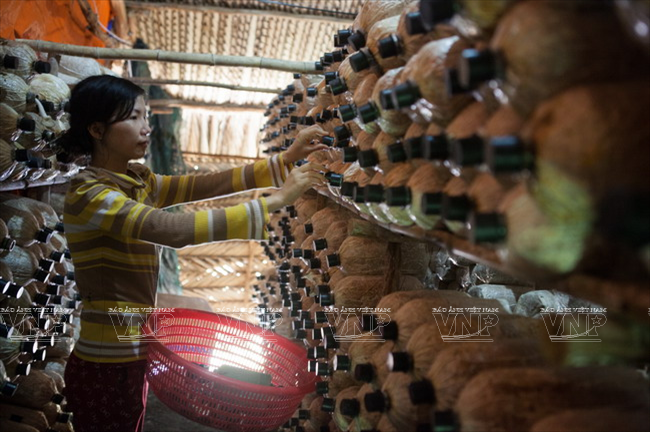
Plastic covers are used to control the mushroom’s development. Photo: Le Minh/VNP
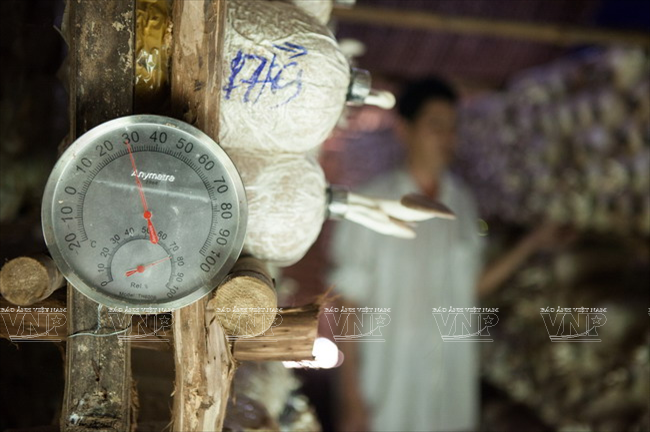
The measuring temperature system at Le Huu Chien’s mushroom farm
in District 9, Ho Chi Minh City. Photo: Le Minh/VNP
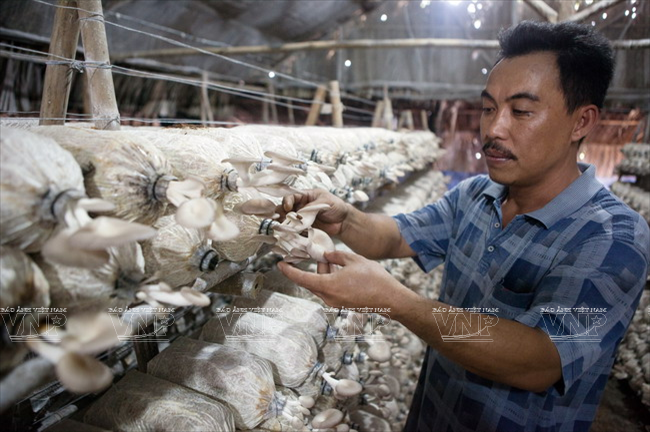
Le Huu Chien, who owns 25 mushroom houses in Long Binh Ward,
inspects the growth of mushrooms. Photo: Le Minh/VNP
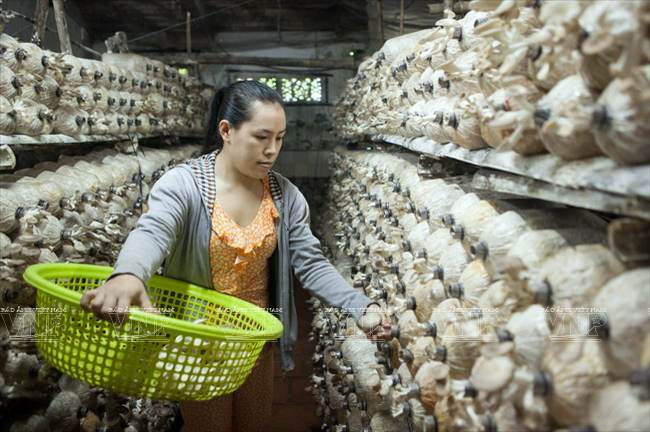
Collecting mushrooms at Le Huu Chien’s farm. Photo: Le Minh/VNP |
Nam bao ngu xam is easy to grow and cultivation does not require hard labour, machines or modern equipment. Furthermore, mushroom cultivation isn’t very time intensive, meaning it can be done during the family’s spare time or after work, providing a good source of additional income. Mushrooms are also more advantageous when economically compared to other crops since they fetch a higher price and have a much shorter turnaround time. More than anything, mushrooms are highly nutritious and have always been a very popular food in Vietnam – a winner in all respects. Therefore, many families in Long Binh Ward are engaged in growing this variety of mushroom and have become well off. One of them is Le Huu Chien whose farms now consists of 25 mushroom cultivating houses, providing the market with about one tonne of product each day.
According to Chien, it costs about 90 million dong to build a mushroom house, about 6m wide and 12m long, which has a thatched roof and an automatic watering system. To help mushrooms grow well, the farmers have to pay much attention to maintaining a suitable temperature, humidity, wind and light, always keeping the mushroom houses clean and airy. Mushroom spores are put on shelves and grown in a closely-observed environment with a temperature from 25-270C and humidity of 80-85%.
Although it is initially capital-intensive, this variety of mushroom brings about high productivity for four months. It takes only 70 days from planting to harvesting and mushrooms are harvested every ten days. Farmers can adjust the growth of mushrooms at their desire.

Mushrooms are cleaned before packaging. Photo: Le Minh/VNP
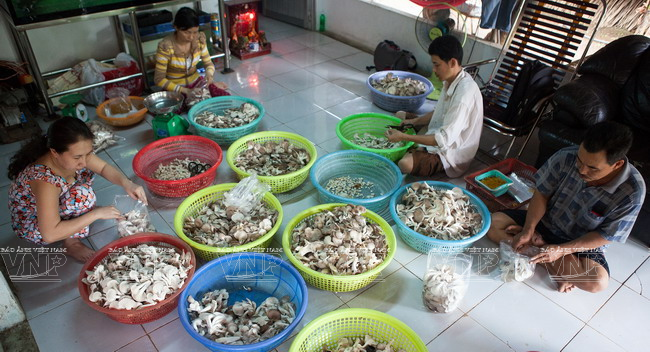
Mushrooms are cleaned and classified before packaging. Photo: Le Minh/VNP
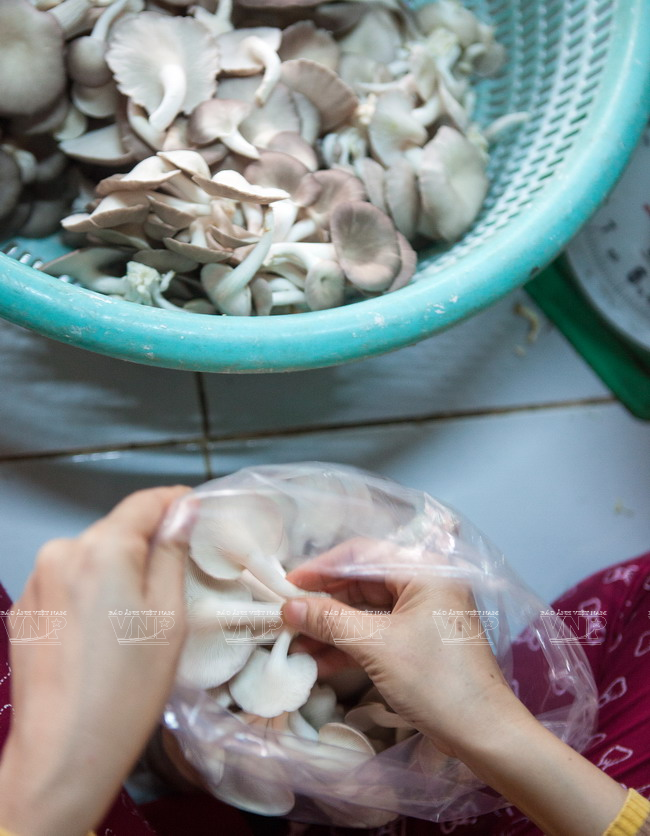
Mushrooms are ready for selling to the market. Photo: Le Minh/VNP
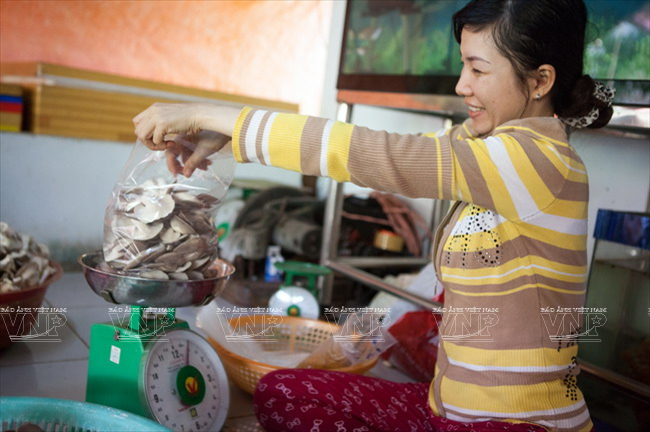
Mushrooms are packed into 1kg-packages. Photo: Le Minh/VNP
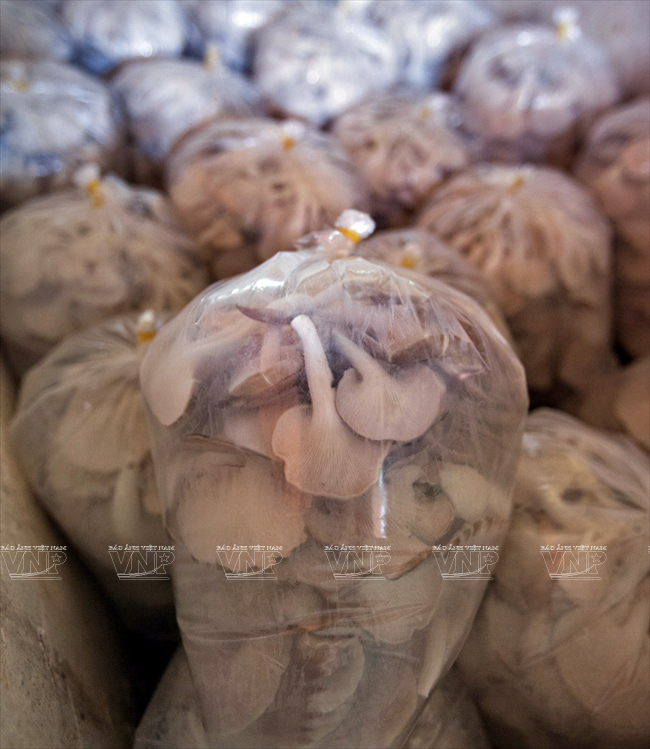
Nam bao ngu xam product is stored in fridge. Photo: Le Minh/VNP |
At present, the mushrooms can fetch 30,000-45,000 VND/kg and even 100,000 VND/kg during peak times. Realising the great economic value of this variety, many families in Long Binh have invested more money to develop the model and each of them owns at least two mushroom cultivating houses and some even 25 like the family of Chien.
“Though the mushroom growing model has been implemented in the ward for a short time, it promises to bring farmers high profit and will surely be further expanded in neighbouring areas,” said Do Thanh Nui, Chairman of Long Binh Ward Farmers’ Association./.
Story: Nguyen Oanh - Photos: Le Minh